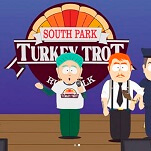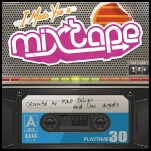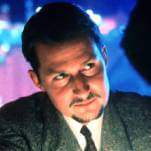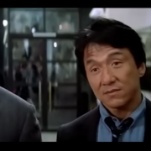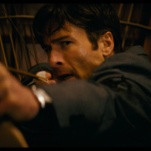Quick Change
Security guard: “What the hell kind of clown are you?”
Bill Murray: “The crying on the inside kind, I guess.”
—Quick Change
That’s Bill Murray in a nutshell. Murray was the sad clown long before Wes Anderson, Sofia Coppola, and Jim Jarmusch explicitly drew out the melancholy that always simmered just below his hilariously sardonic persona. Even in vehicles as purely frivolous as Meatballs, Caddyshack, Stripes, and Ghostbusters, Murray never falls back on excessive wackiness to push a joke across; he’s more the type to sit back on the sidelines, offering commentary on the foolishness that comes into his field of vision. Though there’s an occasional break in the clouds—his joy at the end of Groundhog Day (still his best movie) is as close to contentment as he’s ever gotten onscreen—Murray’s comedy derives from a state of eternal disappointment, and his soulfulness comes from the same place, too. After all, humor is the ultimate defense mechanism: How else to beat back life’s never-ending cavalcade of letdowns and banalities?
The underrated 1990 comedy Quick Change, which Murray co-directed with writer-director Howard Franklin, doesn’t get any better than its first 30 minutes, when Murray the sad clown sets about robbing a bank with oversized shoes, a fistful of balloons, and enough dynamite under his flapping dickey to take out an entire New York City block. As criminals go, Murray’s Grimm isn’t greedy, sadistic, or particularly disposed to professional thievery; he just wants to thumb his nose at the city he hates and collect enough money to leave, in that order. Eight years later, Wes Anderson’s Rushmore would transform Murray into the saucer-eyed Eeyore of the indie set, but his mopey exasperation is the engine that keeps Quick Change humming along as both an offbeat heist movie and a poison-pen letter to New York at its most aggravating.
In the Murray pantheon, Quick Change doesn’t tend to rank terribly high among fans—and frankly, it doesn’t necessarily deserve to, in spite of its many highlights—but in the context of his career, it’s an essential bridge between his early and late periods, a broad entertainment with a strong thread of world-weary cynicism. It’s like a mainstream version of Martin Scorsese’s superior 1985 black comedy After Hours, trapping Grimm and his criminal cohorts in an urban labyrinth that conspires to frustrate them in ways both petty and cruel. Murray carries the load a bit more lightly than he would in later efforts, but his bone-deep despair intermittently makes itself known—in the subway, where his clown masters the same dead-eyed, thousand-yard stare as the other passengers; in the bank vault, where seething class resentment wins him a $12,000 watch for the low, low price of $300; and in the open air, where virtually every New Yorker he encounters throws an obstacle in his way.
The opening scenes find Grimm clomping through public transit en route to the bank, and he barely gets his giant shoe in the door before closing time. With apologies to Woody Allen’s Take The Money And Run, Grimm’s biggest problem upfront is simply convincing everyone that he’s serious: Two cries of “This is a robbery!” are barely enough to get the administrators and tellers to raise their heads, let alone set to work giving the clown what he wants. And even after he fires a few warning shots, the customers complain that their money is unprotected and they could use a receipt. In fact, the only guy panicking is Loomis (Randy Quaid), which should be the first indication to everyone present that he’s in cahoots with the robber. Otherwise, he’d act just as apathetic and mildly put-out as the rest of them.
As heist scenarios go, Grimm’s plot to get out of the bank with a million bucks is pretty standard: With each demand the authorities meet—from simple requests like a transport bus to harder gets, like a monster truck—he agrees to release one hostage. And the first three hostages to go are Loomis, Geena Davis’ Phyllis, and Grimm himself, all filing out in ridiculous-looking disguises that are nonetheless enough to get them by the troglodytes of the NYPD. Grimm’s nemesis, a police chief played by the great Jason Robards, acquiesces to his demands much like the grim-faced authorities in the original 1974 The Taking Of Pelham One Two Three, with salty language and a distinct lack of enthusiasm. That’s one thing Grimm and the police chief have in common: They just want to get through a typical headache of a day in the Big Apple.






